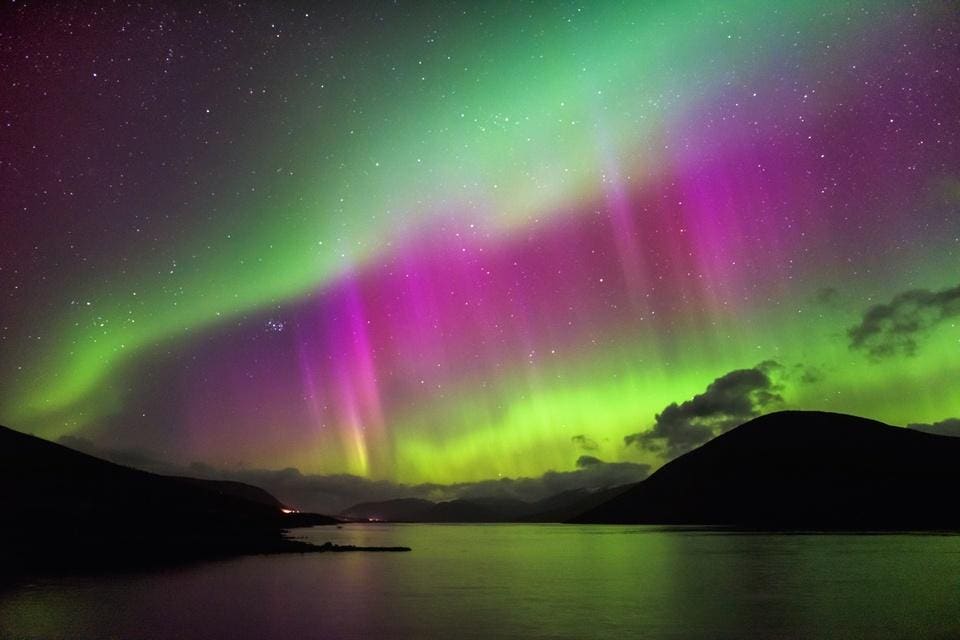
Northern Lights In 2025: Where And When To See Aurora In The U.S. And Europe
The upcoming solar maximum in 2025 is set to bring a prolonged period of heightened solar activity, significantly increasing the likelihood of auroras occurring. According to experts, this means that not only will the Northern Lights (Aurora Borealis) be visible at higher latitudes, but also in lower latitude regions.
For those living in or traveling to the United States and Europe, 2025 presents a unique opportunity to witness the spectacular displays of auroral activity. In fact, Dan Zafra, an astrophotographer who recently won the Atlas competition for the best northern lights images of 2024, suggests that people should “keep an eye on places at lower latitudes where aurora displays are possible.”
This means that states in the U.S. at higher latitudes such as Washington, Minnesota, Wisconsin, and Michigan may experience more frequent and intense Northern Lights displays. Similarly, in Europe, countries like the U.K., Denmark, and Germany could also see auroras.
However, it’s essential to note that while 2025 offers a greater likelihood of seeing auroras at lower latitudes, the displays will be significantly different from those seen in the Arctic Circle. Zafra emphasizes that “the aurora displays in the U.S. lower 48 have been great, with Northern Lights visible even in states like Arizona or New Mexico… However, these are usually limited to a faint glow on the horizon with some sporadic spikes or pulsating lights.”
For those seeking the best and most striking displays of the Northern Lights, it’s still recommended that you head to traditional hotspots such as Alaska, Scandinavia, Iceland, the South Island of New Zealand, and Tasmania in the Southern Hemisphere.
Dr. Cheung has some crucial advice for those considering whether to wait for the aurora to come to them or travel to polar regions: “While solar maximum does mean more storms, which bring the aurora oval to more southern latitudes, you will not only continue to see aurora at more polar regions — even during solar minimum — but with a more active sun, the frequency of storms increases. So, your chances of seeing good aurora storms are higher during solar maximum.”
In conclusion, while 2025 presents an unprecedented opportunity for those in the U.S. and Europe to witness Northern Lights displays closer to their location, it’s essential to understand that this phenomenon will not replicate the intensity or grandeur seen in polar regions.
Source: www.forbes.com


